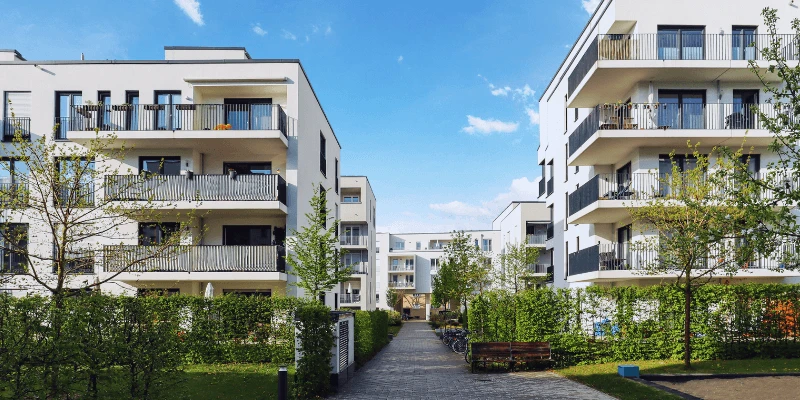Tax Incentives Boosted for Investors Providing Rentals

Tax incentives for investors give a great reason to build large-scale rental properties to alleviate a cramped rental market.
The Albanese Government has just released legislation on Build to Rent (BTR) developments that will come into effect, potentially boosting the availability of dwellings in what many experts have labelled a ‘rental crisis’, with dwelling vacancies at a critical low of 0.7%. This could incentivise the construction of rental properties to eventually alleviate struggling renters.
What is a Build-to-Rent Development?
Eligible BTR Developments are newly constructed, or to be constructed, developments of at least 50 separate properties, owned collectively and managed by a single entity. They’re expressly built to lease to tenants, such as apartment blocks.
Build to Sell sell to separate investors. A single entity, manages the property, providing longer-term leases to renters, putting them at ease that they won’t be searching for new dwellings every year or facing dramatic rent increases.
Why Build-to-Rent?
Build-to-Rent developments have been popular in major international cities such as London, and have recently seen success in Victoria, which implemented a 50% reduction of the
taxable value of the land used for a BTR development for a property life of 30 years. An increased capital works deduction, which has increased to 4% per year, means properties will have a shorter depreciation rate, and developers will have to pay less for build-to-rent properties in annual tax.
The withholding tax rate has also been cut from 30% to 15% for foreign investors investing in build-to-rent, meaning a higher return on investment.
These changes incentivise developers and investors to look at Build to Rent over other developments more seriously and will hopefully work to create more rental properties to combat the emerging rental crisis.
Are there risks to Build to Rent?
Build to Rent can be an excellent option for renters and investors, but its unique setup does have drawbacks. Renters typically lock into a longer lease term. While this does mean security when it comes to a place to live, it can also mean tenants could end up feeling trapped. Tenants may also pay a higher premium in rent, as they usually have access to a building’s amenities.
Investors can expect lower yields than other rental properties and could run the risk of paying higher construction costs than smaller-scale investments. They also have to deal with maintenance of amenities and facilities, and higher body corporate fees.
Build to Rent Developments…
aim to be an alternative, more secure and appealing option to renters, and as home dwellings continue to narrow, they position themselves as potentially a great way to help provide everyone with somewhere to live. Time will tell whether investors will bite at the tax incentives offered, and whether this is the rental crisis relief saviour the Australian Government hopes it is.
Whether you invest in property, or are looking to stop renting and buy a home, we at MoneyQuest can help you consolidate debts, apply for your first home, and make smart investments.
Disclaimer:
This article is written to provide a summary and general overview of the subject matter covered for your information only. Every effort has been made to ensure the information in the article is current, accurate and reliable. This article has been prepared without taking into account your objectives, personal circumstances, financial situation or needs. You should consider whether it is appropriate for your circumstances. You should seek your own independent legal, financial and taxation advice before acting or relying on any of the content contained in the articles and review any relevant Product Disclosure Statement (PDS), Terms and Conditions (T&C) or Financial Services Guide (FSG).
Please consult your financial advisor, solicitor or accountant before acting on information contained in this publication.
© 2017-2024 MoneyQuest Australia Pty Ltd, Australian Credit Licence 487823